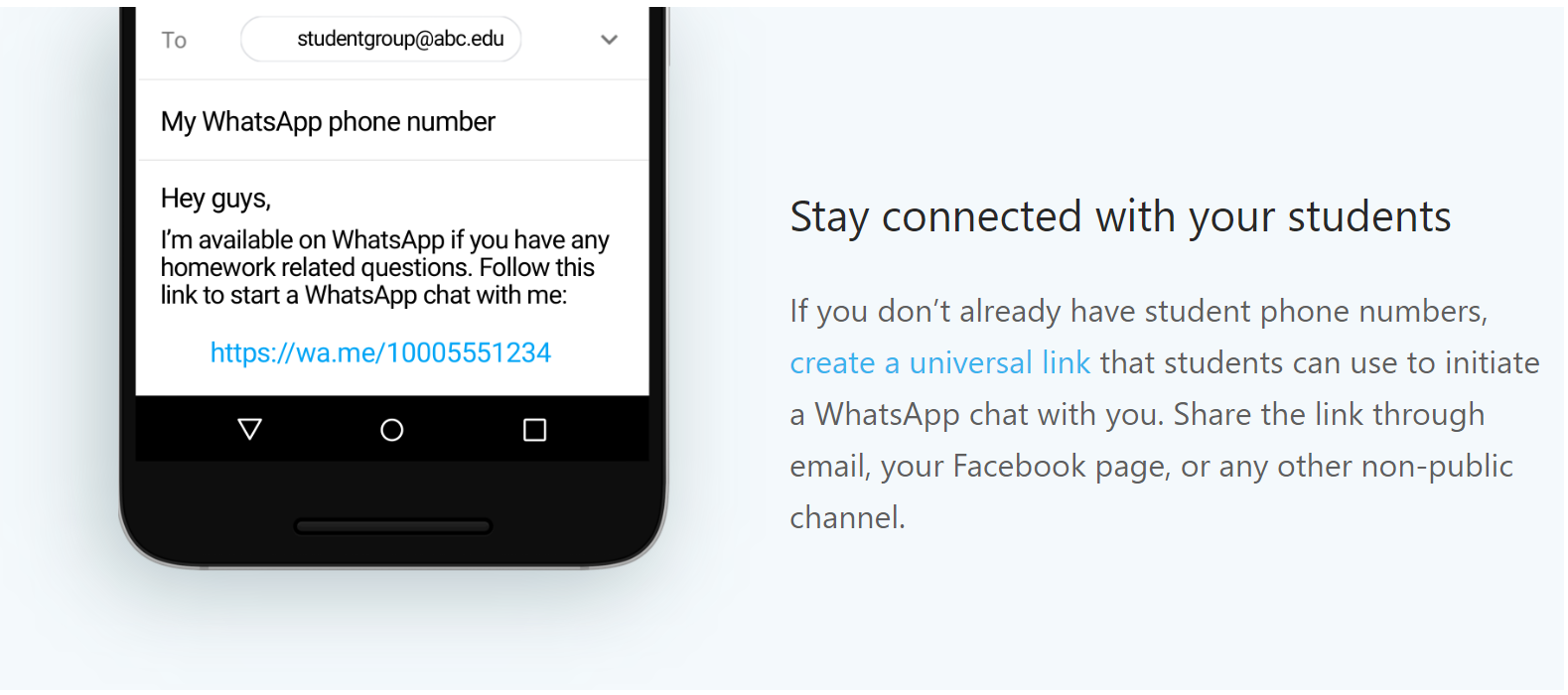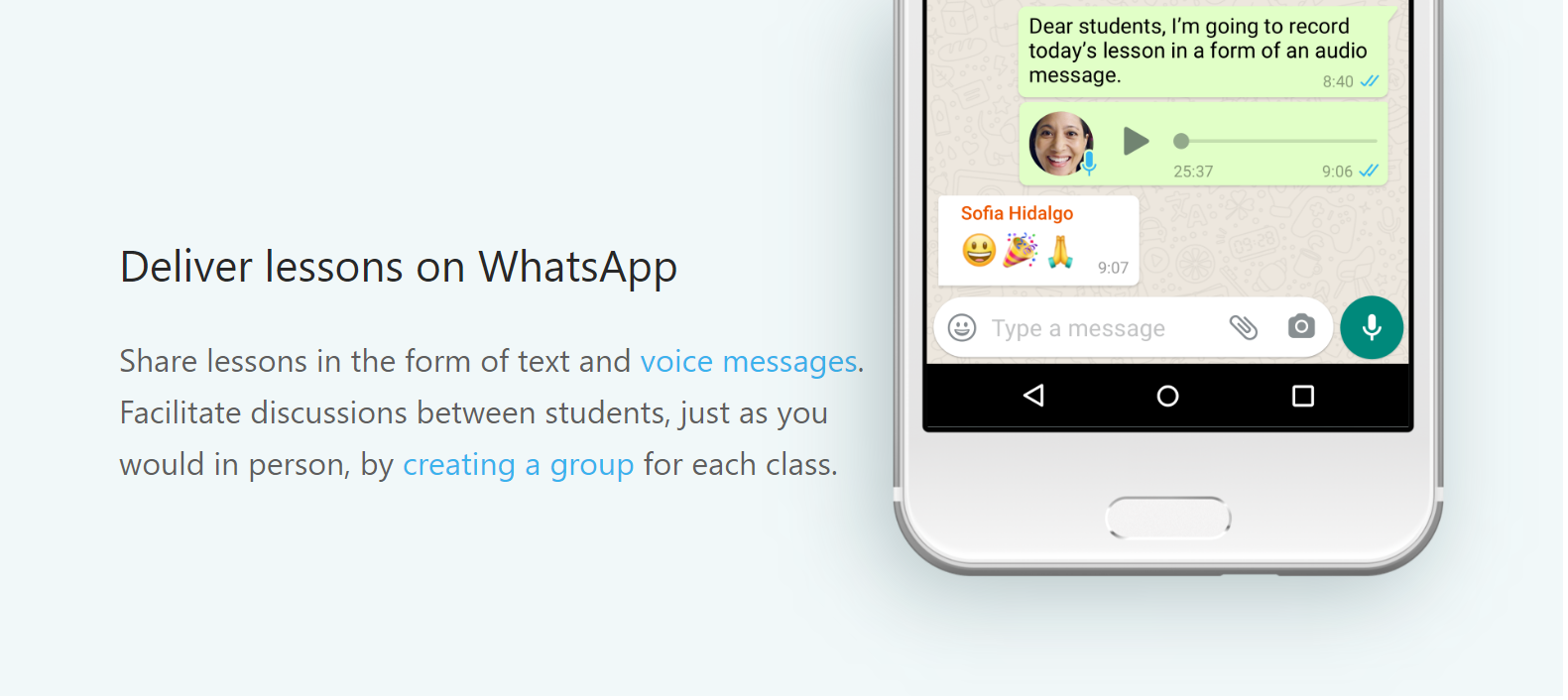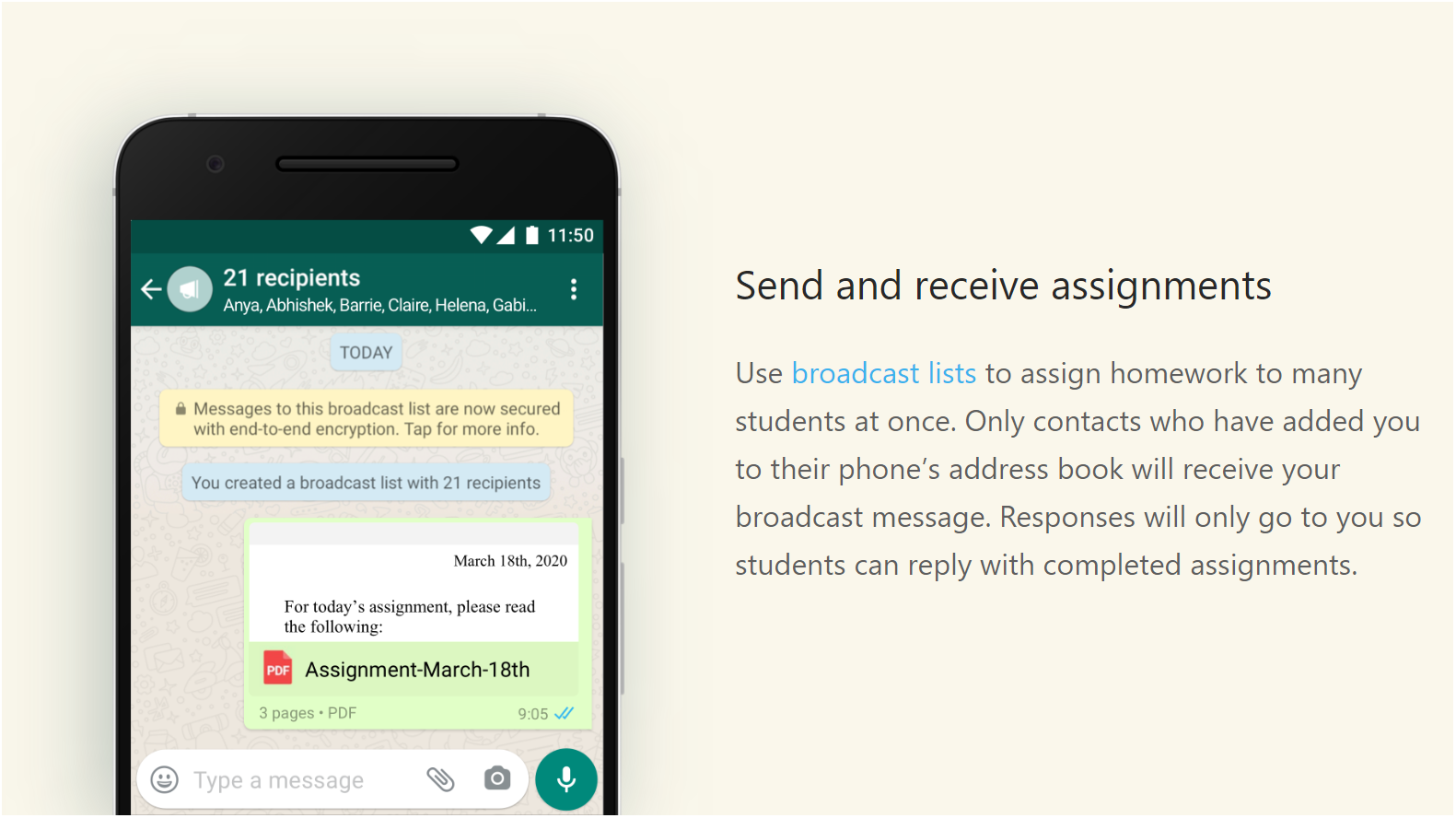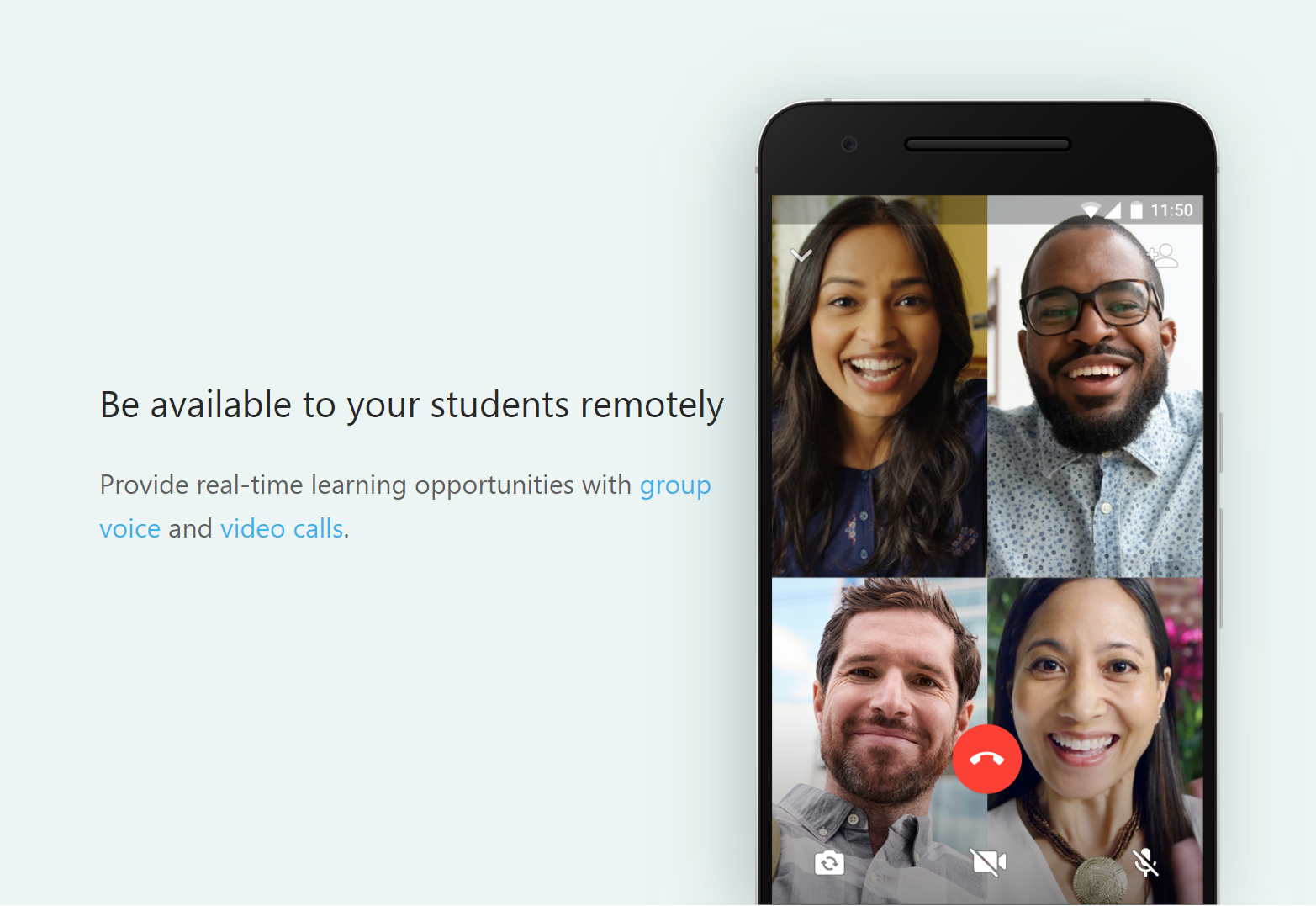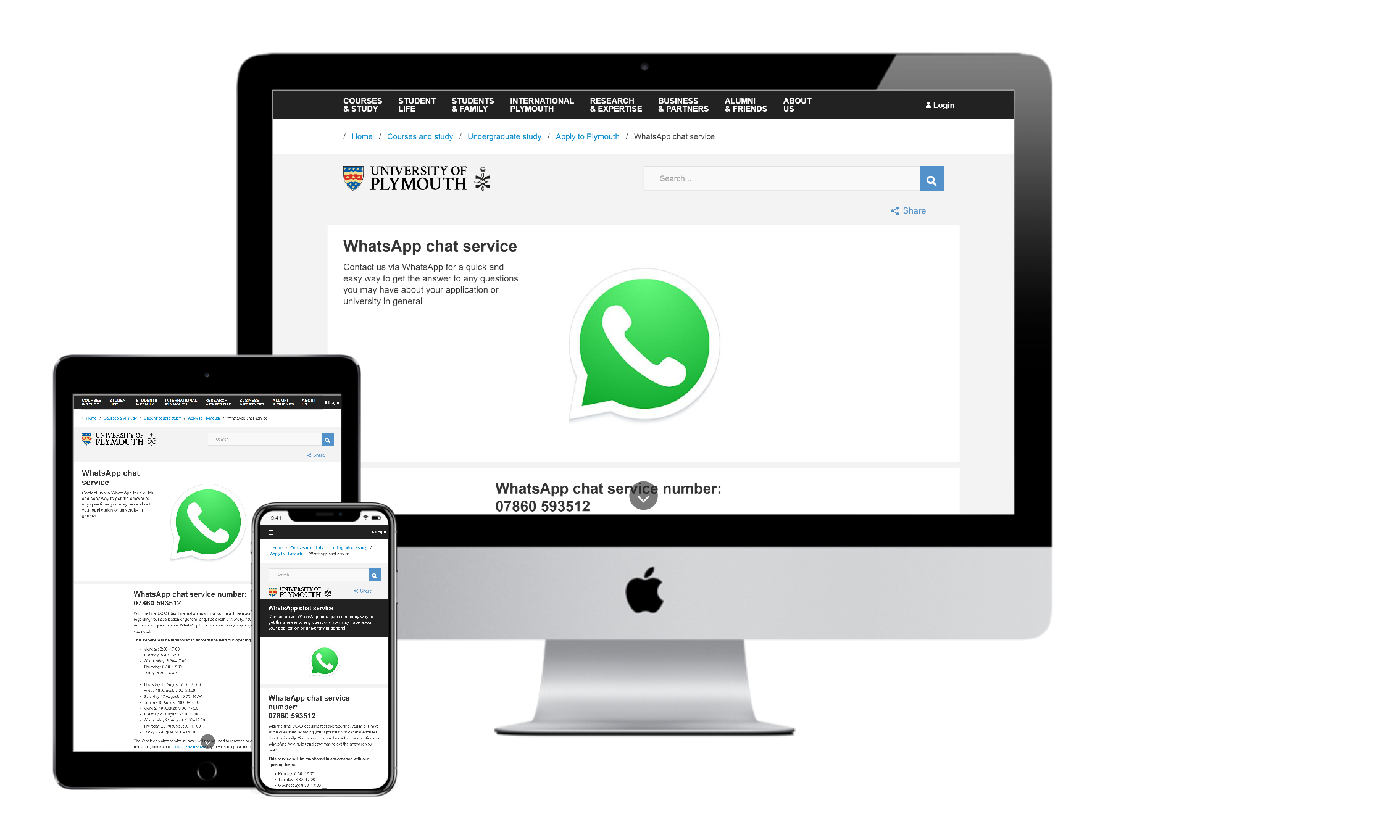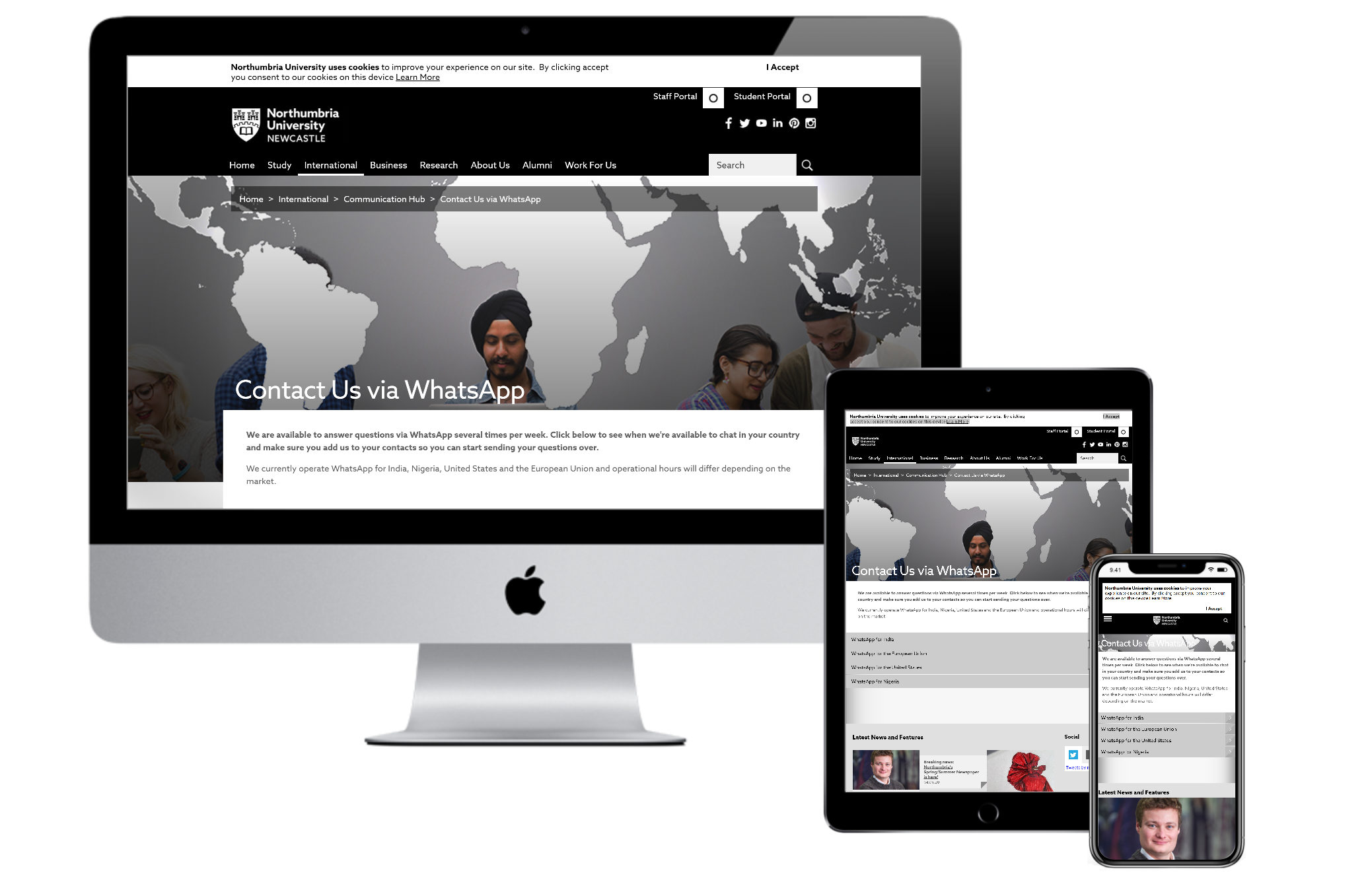WhatsApp is growing in popularity around the globe and it's continuing to climb its way into institutions' recruitment strategies and marketing plans. But as Institutions respond to the ongoing coronavirus pandemic, we look at how universities are leveraging the technology to engage students in new innovative ways.
WhatsApp also now have a specific information page for educators.
WhatsApp has now reached a saturation point. It's ingrained in the social fabric of student life and it's become the go-to app on most people's phones.
It's also a very effective direct form of communication and institutions are exploring new ways to refresh their student recruitment and communication plans for the upcoming year in response to the corona virus pandemic, and are rapidly adding WhatsApp into their communications framework. Read on to find out how.
The benefits of using WhatsApp for intelligent institution marketing during the coronavirus crisis
WhatsApp gives you a private one-to-one conversation. And the conversation feels natural, with many students talking freely in the way they would with their friends and family.
It's also immediate. As with the rise of LiveChat and chatbots in higher education, it's quick to use and faster than email.
Suppose a prospective student has a few questions about the application process. They could compile a formal email covering all their questions. But sometimes the answers to one query influence the other questions being posed. In an email situation that could mean an email chain that builds up over weeks of back and forth.
In WhatsApp, that conversation can be nuanced, detailed and effective. And take place in something closer to ten minutes.
In WhatsApp it's also acceptable to pick up and drop communications when it's most convenient (or most effectively resourced in the case of university teams) on WhatsApp and this gives institutions much-needed flexibility in responding to student and prospective students' requests.
And consider this. You can be up and running relatively quickly with WhatsApp.
Unlike other social platforms, there is no need to create a detailed content strategy or content plan. The focus instead can be on how you promote WhatsApp as a channel, the use-cases where it will be effective, how to resource and train teams to use it, what handoffs to other channels might be required, and what control and governance measures should be in place. In a time when institutions are having to respond rapidly to the fallout from the coronavirus pandemic, this ease of implementation matters.
Adidas forging a path in WhatsApp marketing communications
For a brief moment, it's worth taking a look at how corporations are using WhatsApp. Adidas, for example, has been using the platform and other direct messaging apps to chat to customers since 2015 and is now ramping up its plans to make this one of its core marketing channels, as it shifts even more to online engagement due to the pandemic.
Initially, the platform was seen by Adidas as a way to build and connect with hyper-local communities in target cities. Now, it's being used as one of the main channels for global campaigns.
The company is citing WhatsApp as an enabler helping to build direct relationships with smaller communities of influential people over time in a way that feels more conversational than transactional.
It seems that brands, like Adidas, are now taking WhatsApp seriously as a communications channel.
How can universities learn from brands like Adidas and use Whatsapp to support student engagement during the pandemic and beyond?
The use cases are already broad, and with institutions adopting and placing more value on engagement through the platform, new creative ways are emerging in how to communicate with different groups.
In higher education, institutions are using WhatsApp to connect with international students, for example, to build a feeling of connectedness in different regions based on nationality and program choices even before they've applied.
There are so many factors to consider in making the decision to join a university abroad and institutions need to work even harder to convince international students about the safety of campus, access to transport, how teaching will be delivered effectively and much more. Having a like-minded group of people readily accessible online to seek advice from, and to build friendships with, can make the entire process and move abroad feel much less daunting, particularly at this time of uncertainty.
The platform is also proving to be beneficial for virtual open days. In the run-up to events, updates can be drip-fed through to attendees, and prospective students can connect with each other in advance of the day so the virtual visit feels more social. On the day itself, the immediacy of WhatsApp comes into its own, with co-ordinators able to answer queries efficiently and provide last-minute updates.
In the UK we've also seen institutions offering the opportunity for students to sign-up for WhatsApp alerts in advance of applying, before the start of Clearing (the intense period in the academic calendar in the UK where students can change their institution, course or apply either to ‘shop around' when their grades are better than anticipated, or when they don't quite achieve the grades they were predicted).
Northumbria University, for instance, provides a WhatsApp service to help students understand more about the Clearing process, find out what courses are available in Clearing, get advice on what to do before results day and to receive guidance on results day itself.
Some institutions, such as De Montfort in the UK, are using WhatsApp to make offers to students on A-Level results day.
Throughout students' time at university, they typically already benefit from co-ordinated communications for courses and extra-curricular activities through WhatsApp. But the platform is also useful for graduation communications to enable institutions to send out logistics information and positive communications as well as to let students share moments from one the most important days of the year. As institutions face changes to the way graduations are delivered, this could become even more important for students celebrating their achievements together.
And this desire to connect with other students and colleagues extends on beyond graduation. WhatsApp can therefore also support communication activity with alumni networks helping to keep everyone involved connected and engaged.
The benefits of WhatsApp deliver across the full student lifecycle
Adopting tools like WhatsApp not only shows your community that you're moving with the times but it also meets students on a platform they're already very comfortable with and active on. As we've seen with the exponential growth in platforms like Zoom, familiar and user-friendly cloud-based software can deliver real benefits.
Getting started with WhatsApp for your student engagement activity is relatively easy and quick.
Get a mobile number dedicated to this purpose, formulate a strategy for how it will be used, find effective ways to promote it on your university's digital channels and reap the benefits.
If your institution is new to WhatsApp you can start small and experiment. For others already using WhatsApp, you should be confident in the use-cases and benefits to roll it out further this year to help with engagement and direct communications.
WhatsApp has the potential to put institutions at the conversational forefront on students phones during this period of unprecedented change. When it's carefully managed, and well thought through, it can only be a good thing.
Is your university using WhatsApp to connect with students and to communicate how the institution is adapting in response to the coronavirus pandemic?

:format()//media/whatsapp-blog-1200x6752x.png)
